Filter by
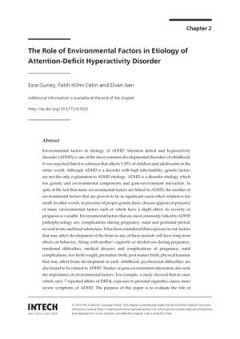
The Role of Environmental Factors in Etiology of Attention- Deficit Hyperacti…
Environmental factors in etiology of ADHD Attention deficit and hyperactivity disorder (ADHD) is one of the most common developmental disorders of childhood. It was reported that it is a disease that affects 5.29% of children and adolescents in the entire world. Although ADHD is a disorder with high inheritability, genetic factors are not the only explanation to ADHD etiology. ADHD is a disorde…
- Edition
- -
- ISBN/ISSN
- 9789535121664
- Collation
- -
- Series Title
- -
- Call Number
- -
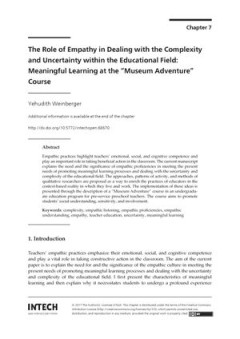
The Role of Empathy in Dealing With The Complexity and Uncertainty Within The…
Empathic practices highlight teachers’ emotional, social, and cognitive competence and play an important role in taking beneficial action in the classroom. The current manuscript explains the need and the significance of empathic proficiencies in meeting the present needs of promoting meaningful learning processes and dealing with the uncertainty and complexity of the educational field. The a…
- Edition
- -
- ISBN/ISSN
- 9789535134534
- Collation
- -
- Series Title
- -
- Call Number
- -
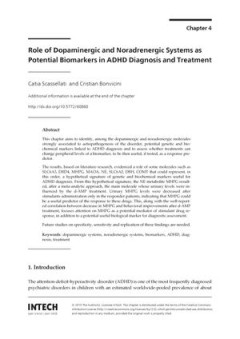
Role of Dopaminergic and Noradrenergic Systems as Potential Biomarkers in ADH…
This chapter aims to identify, among the dopaminergic and noradrenergic molecules strongly associated to aetiopathogenesis of the disorder, potential genetic and biochemical markers linked to ADHD diagnosis and to assess whether treatments can change peripheral levels of a biomarker, to be then useful, if tested, as a response predictor.
- Edition
- -
- ISBN/ISSN
- 9789535121664
- Collation
- -
- Series Title
- -
- Call Number
- -

Risk of Eating Disorders and Physical Self-Concept in Adolescence
Risk of Eating Disorders and Physical Self-Concept in Adolescence
- Edition
- -
- ISBN/ISSN
- 9789535100010
- Collation
- -
- Series Title
- -
- Call Number
- -
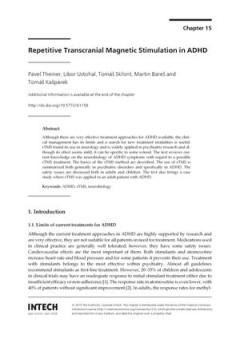
Repetitive Transcranial Magnetic Stimulation in ADHD
Although there are very effective treatment approaches for ADHD available, the clinical management has its limits and a search for new treatment modalities is useful. rTMS found its use in neurology and is widely applied in psychiatric research and although its effect seems mild, it can be specific to some extend. The text reviews current knowledge on the neurobiology of ADHD symptoms with rega…
- Edition
- -
- ISBN/ISSN
- 9789535121664
- Collation
- -
- Series Title
- -
- Call Number
- -
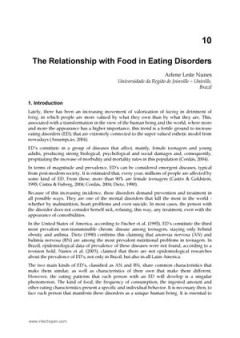
The Relationship with Food in Eating Disorders
The Relationship with Food in Eating Disorders
- Edition
- -
- ISBN/ISSN
- 9789535100010
- Collation
- -
- Series Title
- -
- Call Number
- -

The Quality of Life (QoL) in Attention Deficit Hyperactivity Disorder (ADHD)
Attention-deficit/hyperactivity disorder (ADHD) is a neurodevelopmental disorder characterized by inattention, impulsivity, and hyperactivity of core symptoms, affecting 3-10% of school age children, as well as 4% of adults.
- Edition
- -
- ISBN/ISSN
- 9789535121664
- Collation
- -
- Series Title
- -
- Call Number
- -
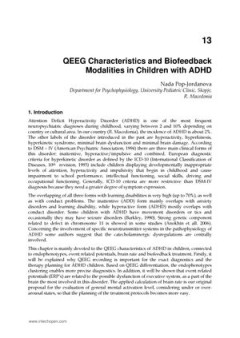
QEEG Characteristics and Biofeedback Modalities in Children with ADHD
QEEG Characteristics and Biofeedback Modalities in Children with ADHD
- Edition
- -
- ISBN/ISSN
- 9789533078687
- Collation
- -
- Series Title
- -
- Call Number
- -
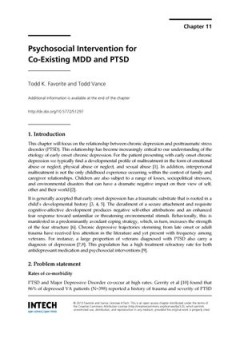
Psychosocial Intervention for Co-Existing MDD and PTSD
Psychosocial Intervention for Co-Existing MDD and PTSD
- Edition
- -
- ISBN/ISSN
- 9789535111474
- Collation
- -
- Series Title
- -
- Call Number
- -
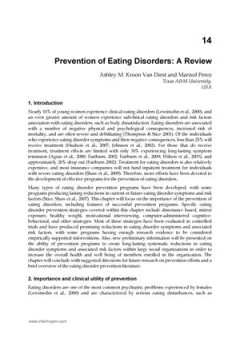
Prevention of Eating Disorders a Review
Prevention of Eating Disorders: A Review
- Edition
- -
- ISBN/ISSN
- 9789535100010
- Collation
- -
- Series Title
- -
- Call Number
- -
 Computer Science, Information & General Works
Computer Science, Information & General Works  Philosophy & Psychology
Philosophy & Psychology  Religion
Religion  Social Sciences
Social Sciences  Language
Language  Pure Science
Pure Science  Applied Sciences
Applied Sciences  Art & Recreation
Art & Recreation  Literature
Literature  History & Geography
History & Geography